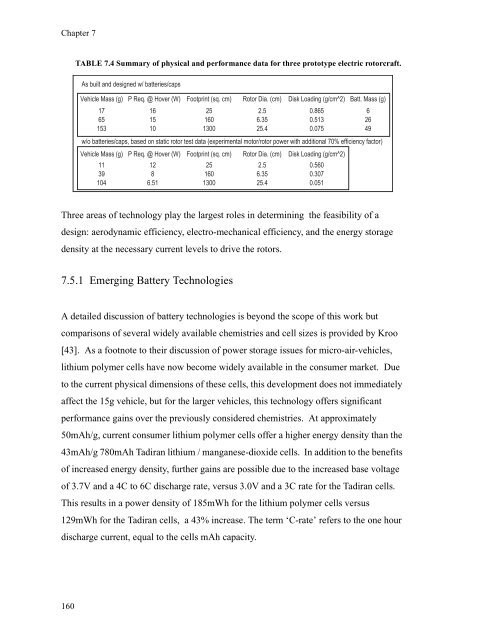Aerodynamics and Design for Ultra-Low Reynolds Number Flight
Aerodynamics and Design for Ultra-Low Reynolds Number Flight
Aerodynamics and Design for Ultra-Low Reynolds Number Flight
Create successful ePaper yourself
Turn your PDF publications into a flip-book with our unique Google optimized e-Paper software.
Chapter 7<br />
160<br />
TABLE 7.4 Summary of physical <strong>and</strong> per<strong>for</strong>mance data <strong>for</strong> three prototype electric rotorcraft.<br />
�� ����� ��� �������� �� ��������������<br />
������� ���� ��� � ���� � ����� ��� ��������� ���� ��� ����� ���� ���� ���� ������� �������� ����� ���� ���<br />
�� �� �� ��� ����� �<br />
�� �� ��� ���� ����� ��<br />
��� �� ���� ���� ����� ��<br />
��� ��������������� ����� �� ������ ����� ���� ���� ������������� ����������� ����� ���� ���������� ��� ���������� �������<br />
������� ���� ��� � ���� � ����� ��� ��������� ���� ��� ����� ���� ���� ���� ������� ��������<br />
�� �� �� ��� �����<br />
�� � ��� ���� �����<br />
��� ���� ���� ���� �����<br />
Three areas of technology play the largest roles in determining the feasibility of a<br />
design: aerodynamic efficiency, electro-mechanical efficiency, <strong>and</strong> the energy storage<br />
density at the necessary current levels to drive the rotors.<br />
7.5.1 Emerging Battery Technologies<br />
A detailed discussion of battery technologies is beyond the scope of this work but<br />
comparisons of several widely available chemistries <strong>and</strong> cell sizes is provided by Kroo<br />
[43]. As a footnote to their discussion of power storage issues <strong>for</strong> micro-air-vehicles,<br />
lithium polymer cells have now become widely available in the consumer market. Due<br />
to the current physical dimensions of these cells, this development does not immediately<br />
affect the 15g vehicle, but <strong>for</strong> the larger vehicles, this technology offers significant<br />
per<strong>for</strong>mance gains over the previously considered chemistries. At approximately<br />
50mAh/g, current consumer lithium polymer cells offer a higher energy density than the<br />
43mAh/g 780mAh Tadiran lithium / manganese-dioxide cells. In addition to the benefits<br />
of increased energy density, further gains are possible due to the increased base voltage<br />
of 3.7V <strong>and</strong> a 4C to 6C discharge rate, versus 3.0V <strong>and</strong> a 3C rate <strong>for</strong> the Tadiran cells.<br />
This results in a power density of 185mWh <strong>for</strong> the lithium polymer cells versus<br />
129mWh <strong>for</strong> the Tadiran cells, a 43% increase. The term ‘C-rate’ refers to the one hour<br />
discharge current, equal to the cells mAh capacity.




